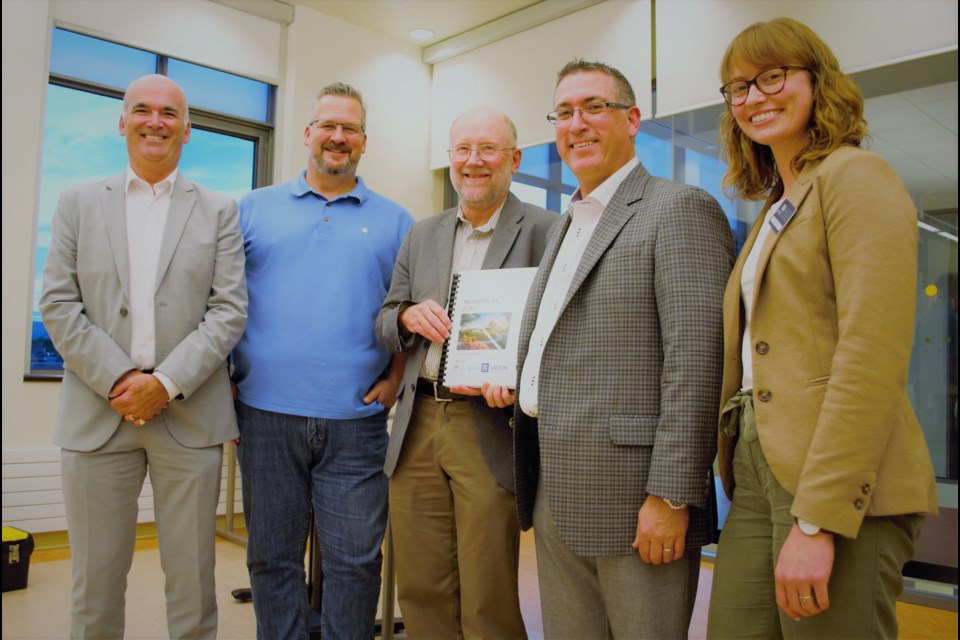Passionate voices rang out from the third floor of the Collingwood Public Library on Wednesday night.
About 40 members of the public were in attendance to voice concerns about the Parks, Recreation and Culture (PRC) Master Plan.
The plan included 120 recommendations based on over a year of consultations with PRC staff, community groups and the public.
“Right now, it’s often the loudest voice (that dictates direction). It’s often begging council for some direction that they’re not equipped to provide either. The PRC Master Plan puts all of us together on the same map and tells us where we should go next,” said Dean Collver, director of parks, recreation and culture for the Town of Collingwood.
Two major recommendations that stood out during the presentation were to retire the Collingwood Elvis Festival, and to pursue a feasibility assessment into building and programming for a multi-use recreation facility.
“The recommendation is to review the Elvis Festival and consider what can happen in the future, whether it can be re-positioned or discontinued with another idea in mind. This isn’t a new idea,” Collver said after the presentation in an interview with CollingwoodToday.
“Every year we look at whether it’s feasible to continue. So far, council has given us the recommendation to keep going with a current mandate taking us into the 25th year (next year),” he said.
Collver says that while the idea of a multi-use facility has been batted around for years, most of the time actual implementation is based on funding help at both the provincial and federal levels.
“Quite often, (a MURF) is not something a municipality can handle on its own,” said Collver. “At the end of the day, you have to have all of your ducks in a row if you’re going to be successful to secure the funding needed to build that.”
Many members of the audience stood up to ask questions and provided pointed commentary on the plan after the presentation.
“Your plan emphasizes the waterfront in many different areas. History has recorded that one could walk down Hurontario Street... to stand at the waterfront and before us lay a panoramic view unequalled anywhere along Georgian Bay,” started resident Ulli Rath, reading from a prepared statement. “There’s no mention of views in this document. Why not?”
“We need a champion in this town to preserve the last remaining views that we have,” said Rath.
Rath outlined various views and vistas in Collingwood that have been blocked by development, saying he feels these views are “under attack.”
“People don’t come to here to see tall buildings or the bay through little narrow streets,” Rath continued. “They come here for tourism, recreation and nature.”
“I think, strongly, that PRC should have entrenched in its mandate that the first principle of any development should be to protect nature,” said Rath. “No tall buildings should be allowed to be anywhere close to our panoramic views.”
Members of the audience clapped when Rath concluded speaking.
Jon Linton, a consultant with TCI Management Consultants, addressed some of Rath’s concerns.
“Cultural landscapes and viewscapes are important, and are part of the history and culture of a community,” said Linton. “We have recommendation 74, which you will see. It talks about the recognition and designation protection of heritage landscapes.”
Collver also addressed concerns that there is overlap between the Waterfront Master Plan and the PRC Master Plan.
“The Waterfront Master Plan was a conceptual plan in nature. It laid out a conceptual understanding of how the waterfront could evolve. It gave us a road map on how to move our way through the waterfront and accomplish the things the community told us about during that process. This plan is a little more operational in nature. We’re learning how we can manage those conceptual things to become a reality,” said Collver.
“Are we ready to hit the road running? We’re running all the time,” said Collver, to laughter from the group. “We’re running in a lot of different directions at once. My department does a lot of great things, but we need a road map. That’s what this document is.”
To read the full report including all 120 recommendations, click here.



